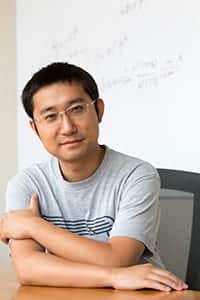The Morgridge Institute for Research is part of a multi-institution research project to develop a device that improves muscle tissue healing for serious injuries, using a combination of artificial intelligence, bioelectronics, and regenerative medicine.
The $22 million project, supported by the Defense Advanced Research Projects Agency (DARPA), is led by the University of Pittsburgh, in partnership with Morgridge, Carnegie Mellon University, Northwestern University, Rice University, University of Vermont, and Walter Reed National Military Medical Center.

Computational biologist Peng Jiang, Morgridge principal investigator for the project, will lead the team’s efforts to characterize the transcriptome and model wound healing. Jiang will work with Jennifer Bolin, a project manager for the regenerative biology research theme at Morgridge, to incorporate high-throughput sequencing methods.
“The time-course gene expression data obtained from RNA sequencing will allow us to understand the transcriptome dynamic changes during wound healing process, and facilitate to identify key regulators,” says Jiang.
Blast injuries, burns, and other complex wounds that afflict soldiers in combat often result in long-term damage to the muscles, bones, and skin with limited treatment options. The proposed “smart” device would dramatically improve the speed and outcome of wound healing for combat injuries.
Large wounds heal slowly, often with incomplete healing and severe scarring. Smaller wounds heal more quickly, as they switch from inflammatory to anti-inflammatory processes to initiate cellular regeneration and tissue repair. The device would essentially stimulate large wounds to heal using the molecular signals involved in small wound healing.
Jiang says there are two key pathways in the wound healing process they intend to study: immune phenotype and neurogenesis. The Morgridge team will use a data-driven approach to investigate these processes, further facilitating the development of technologies for sensing, modeling, and intervention by the other research institutes.
The project will proceed in two phases over the course of four years. Development of the “smart” device will take place in phase one, with work to refine the design and clear a path for clinical translation in phase two.
“We believe that this four-year initiative will fundamentally change the current empirical approach for wound healing,” says Jiang.
